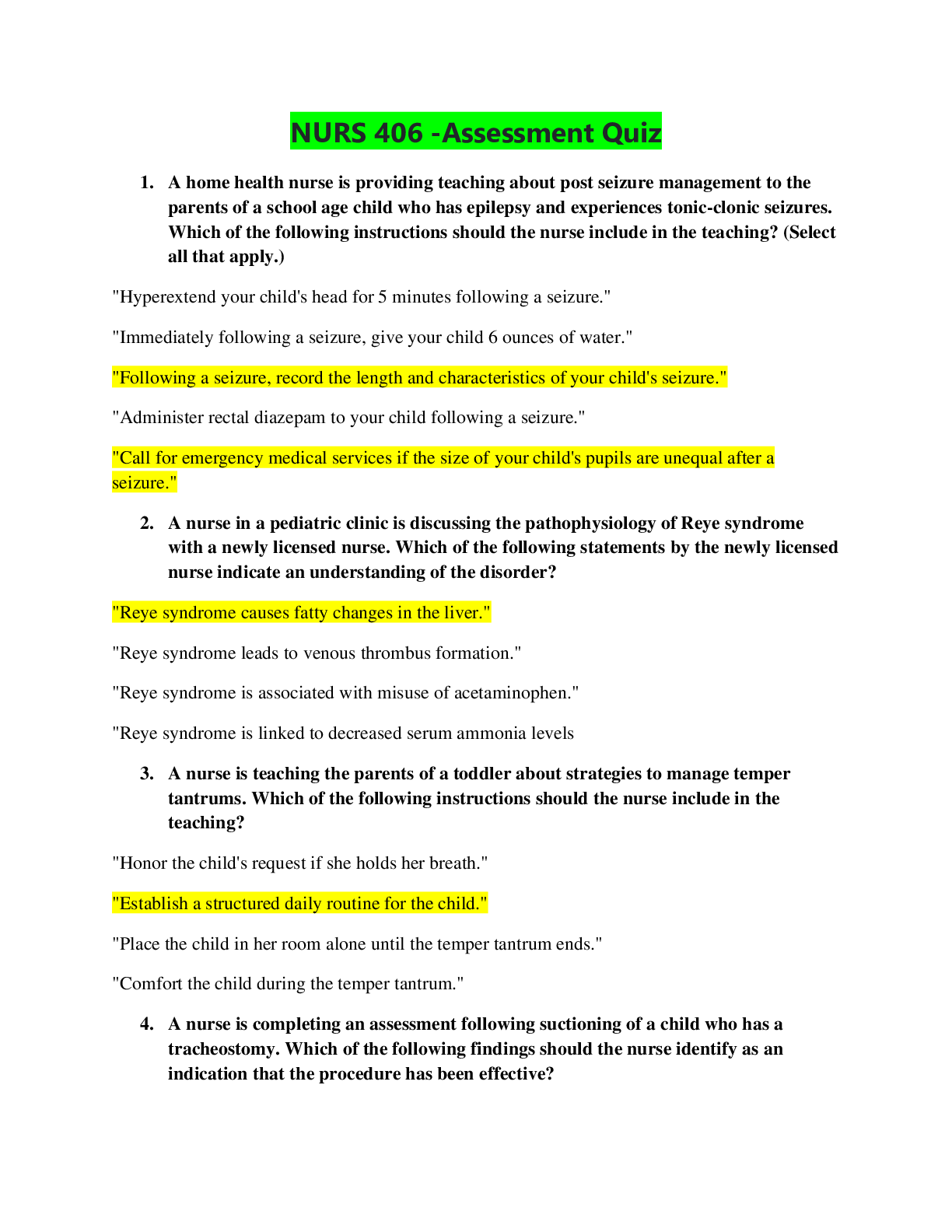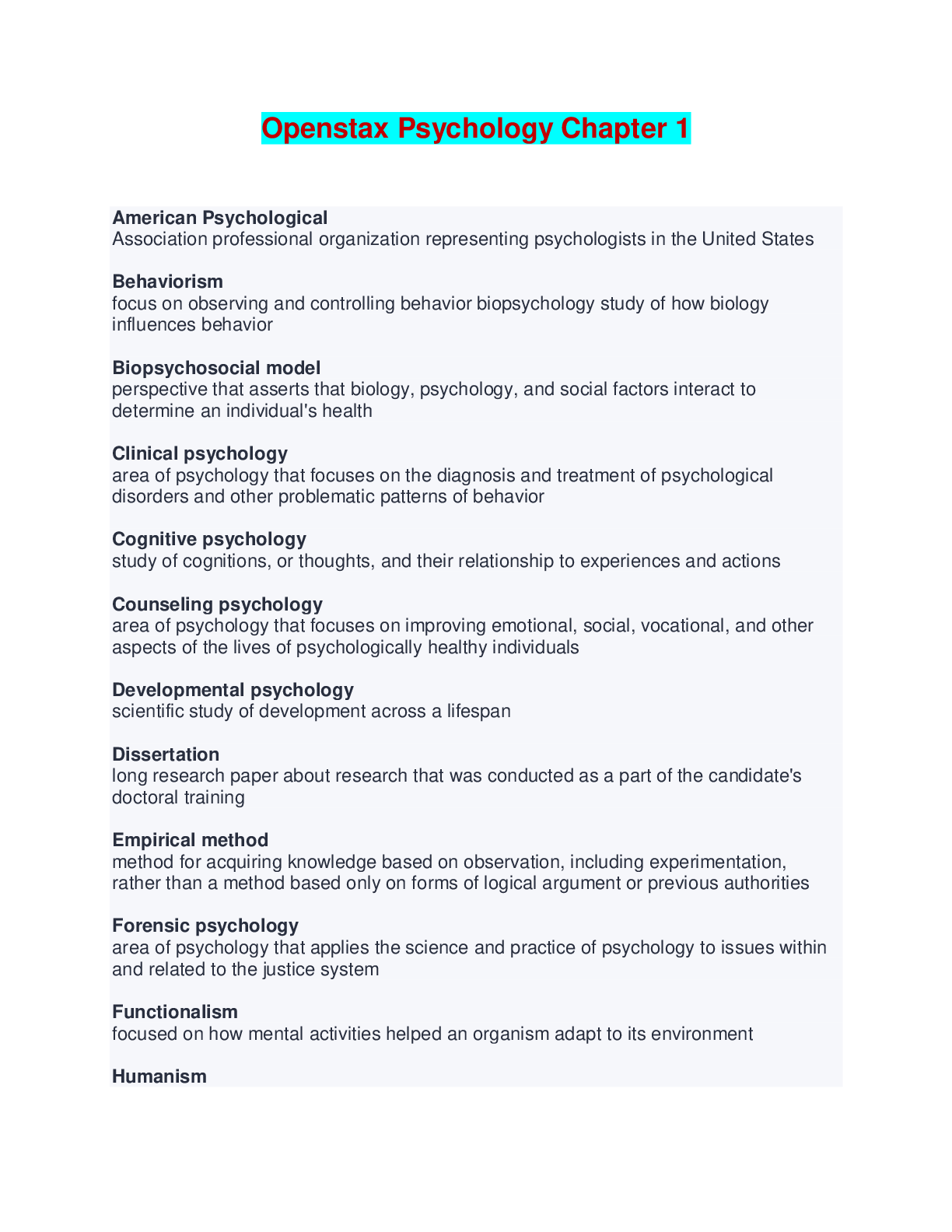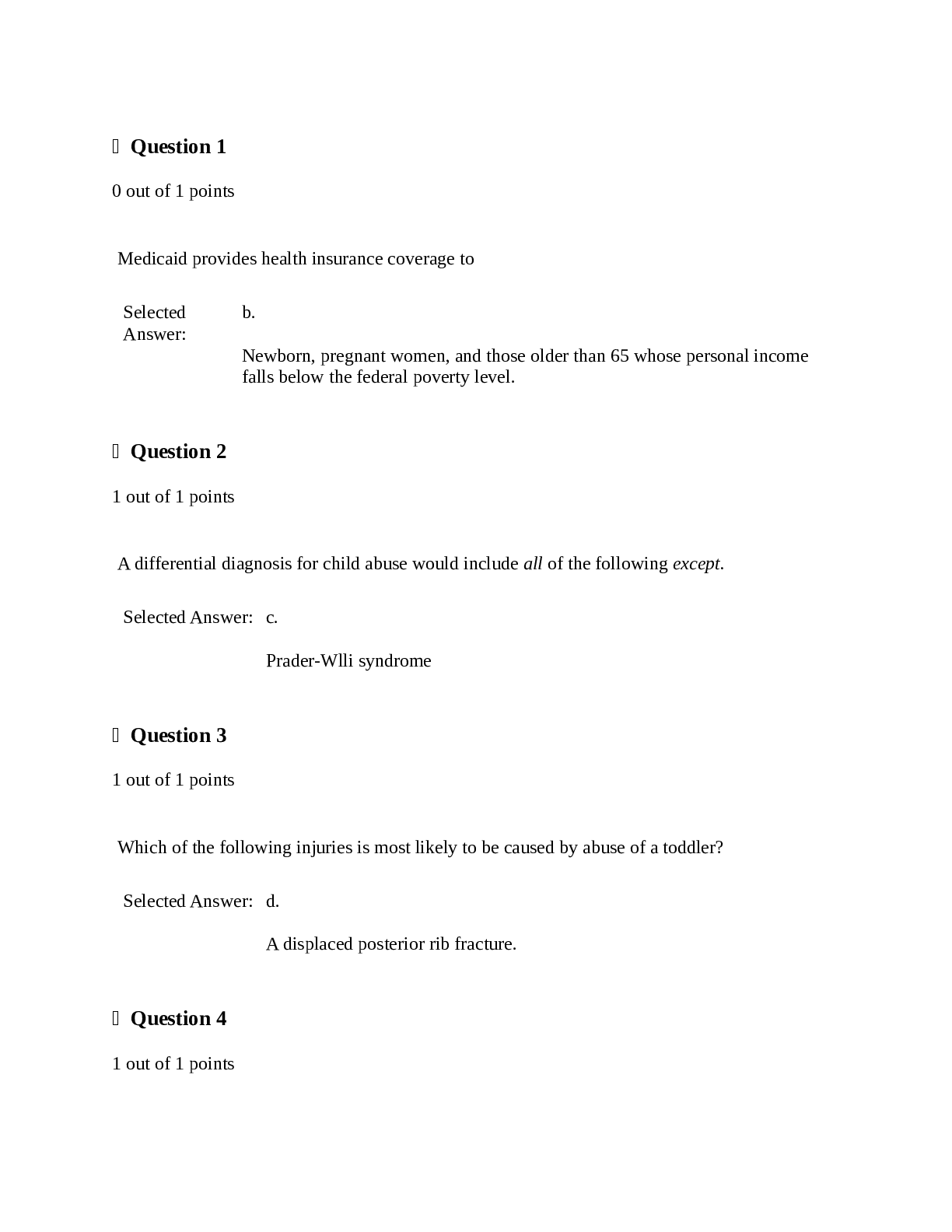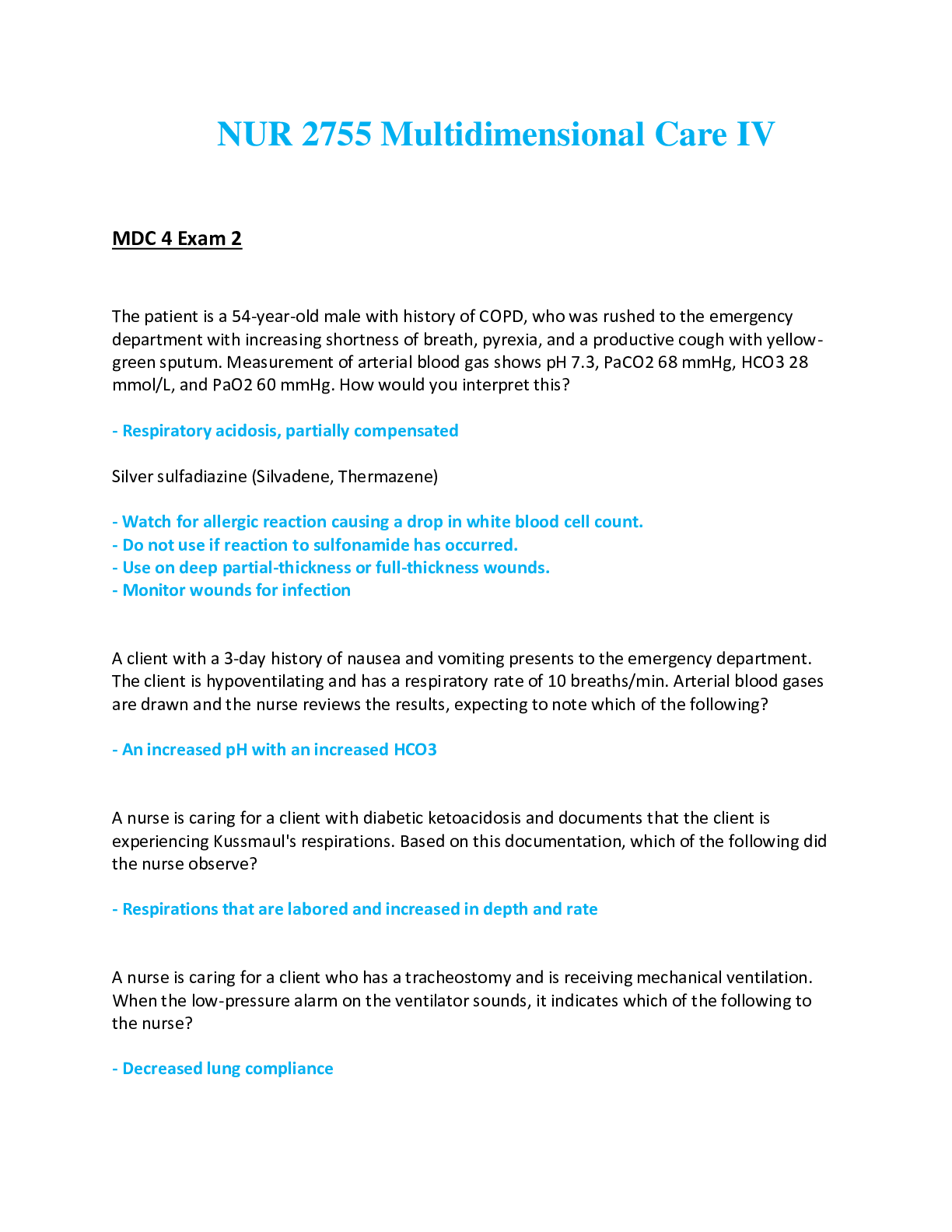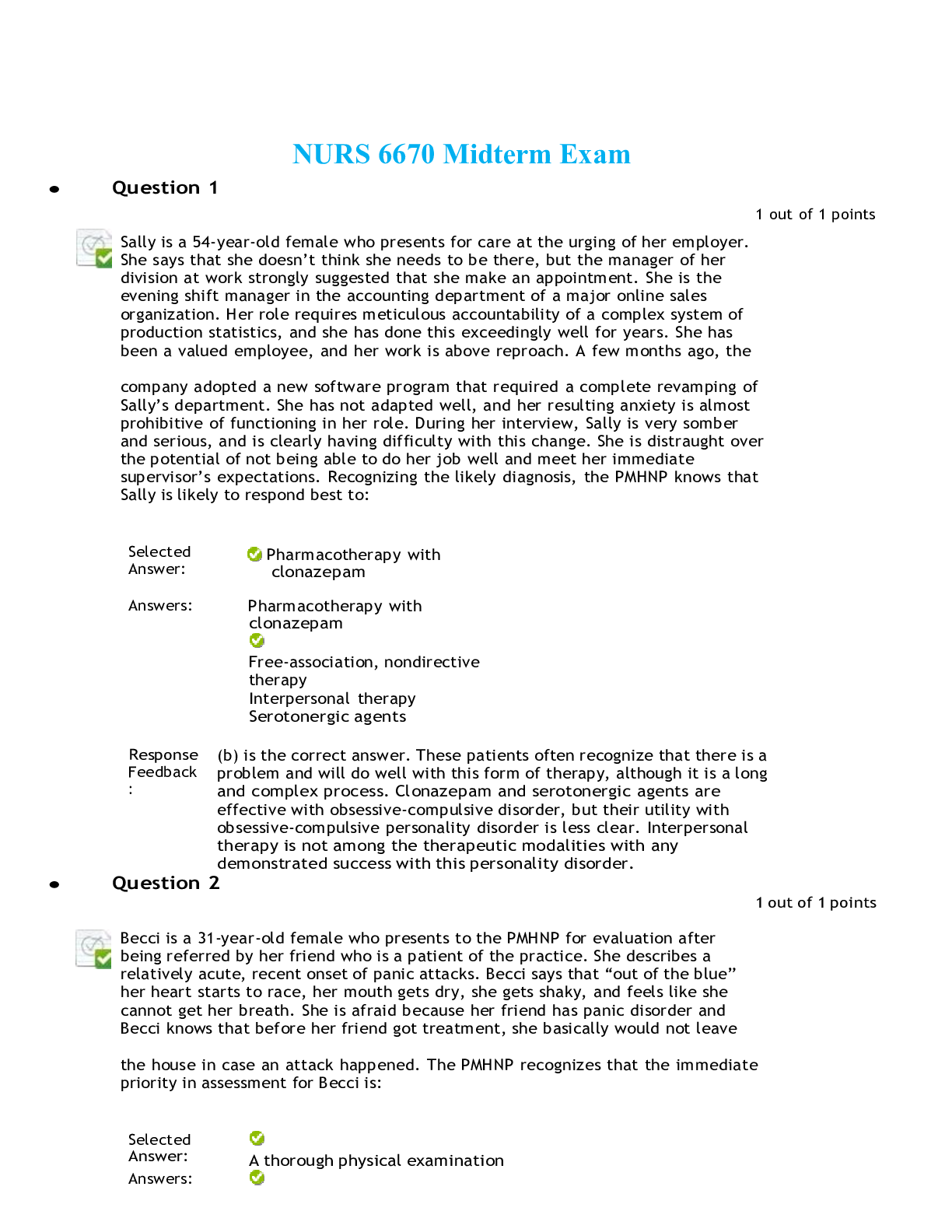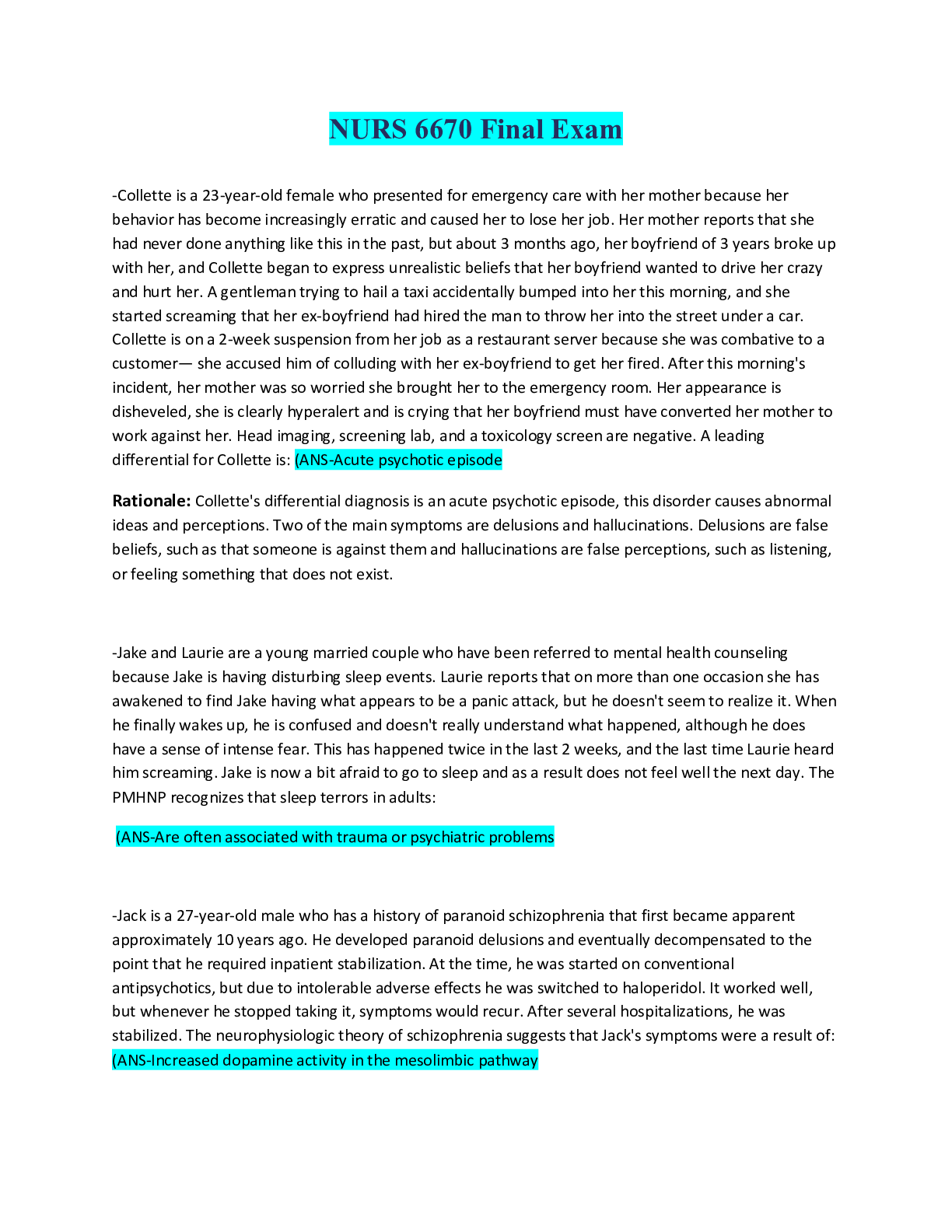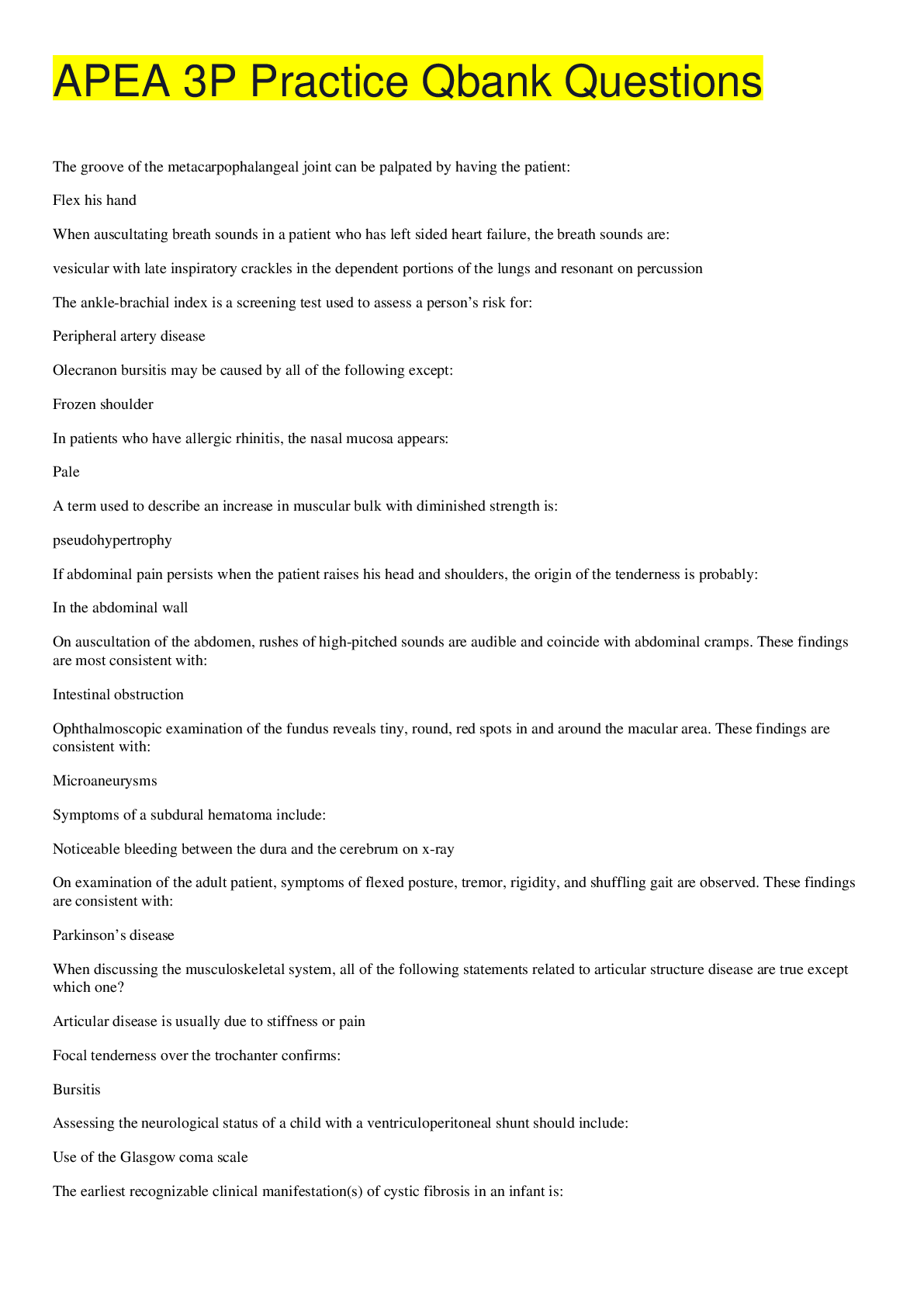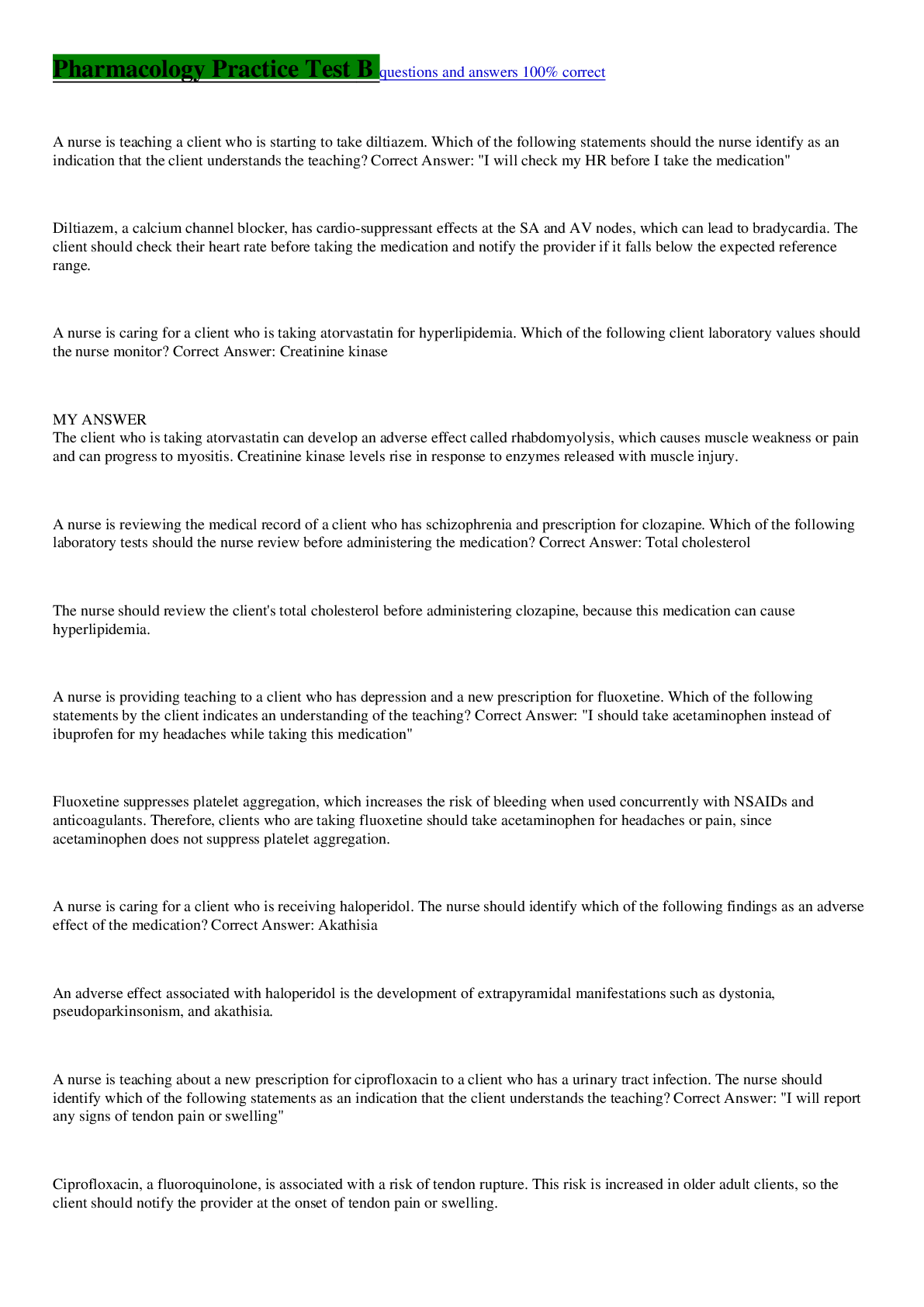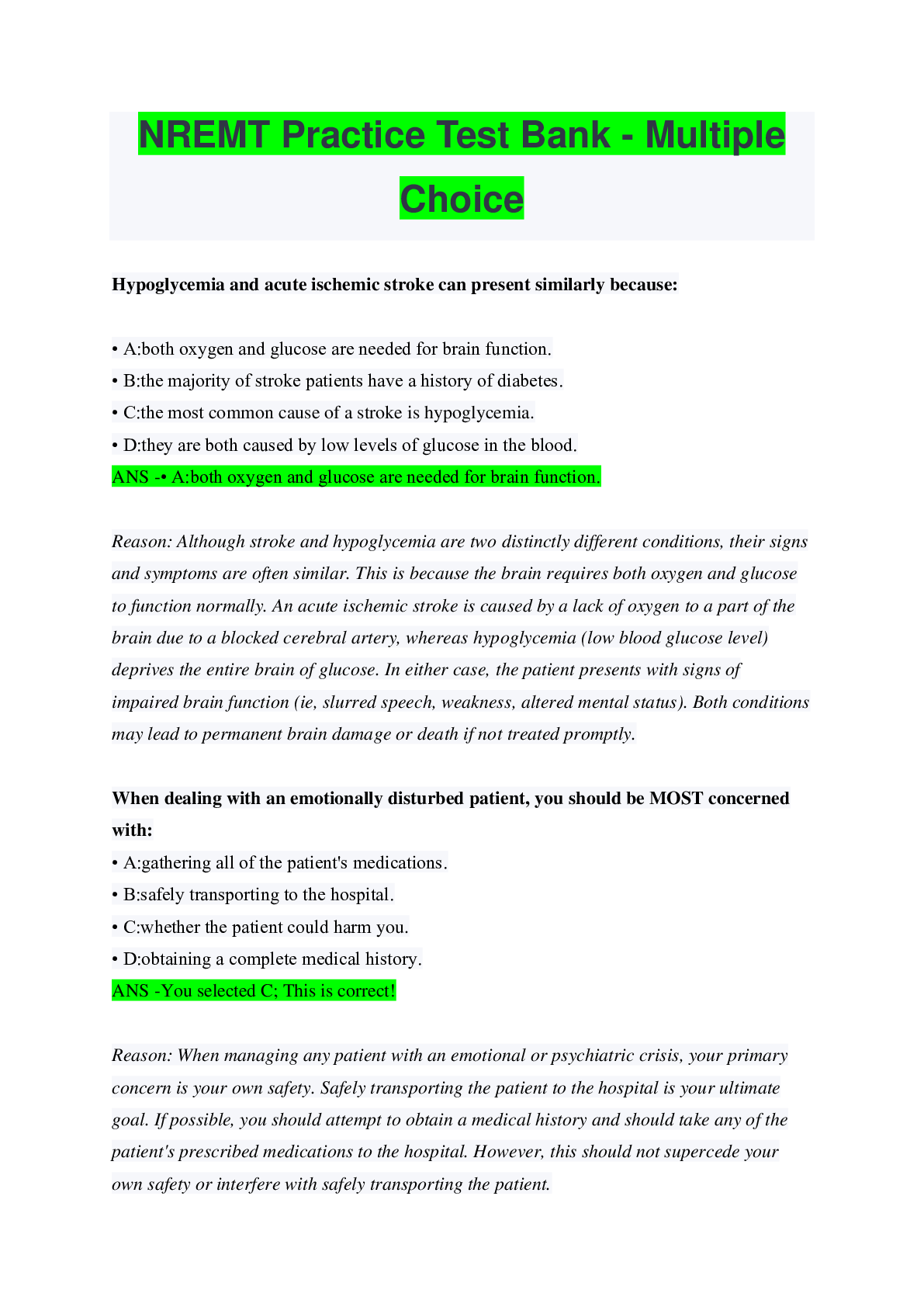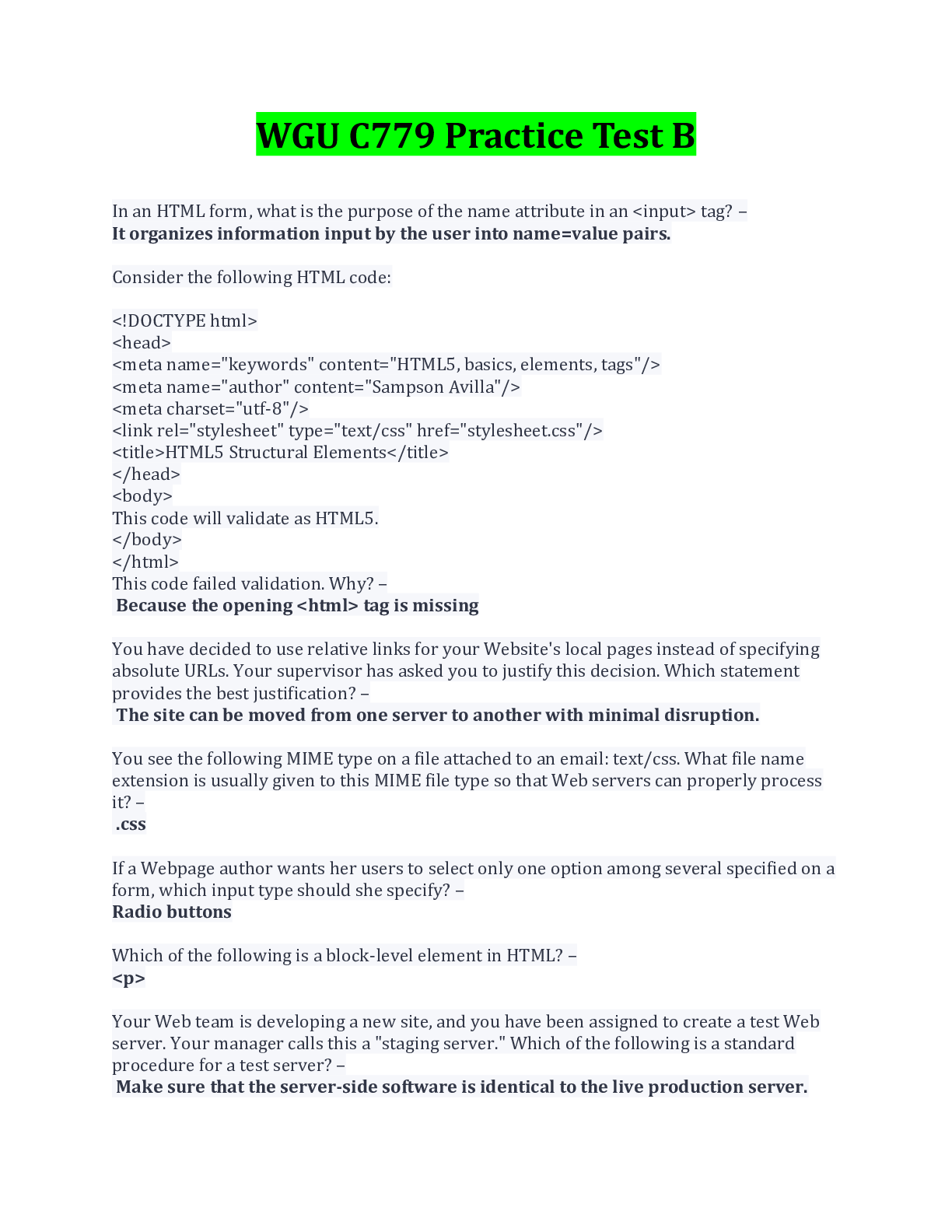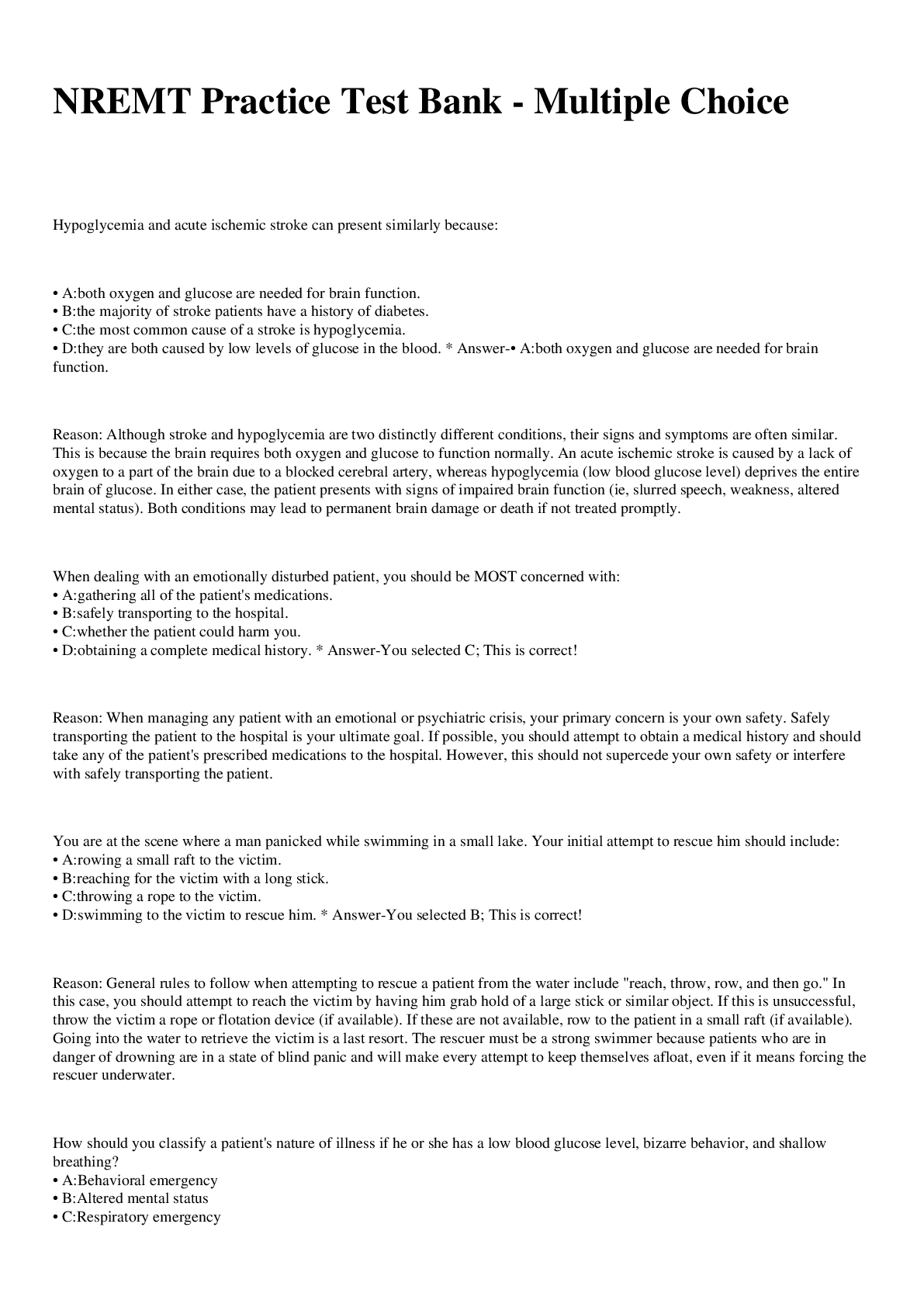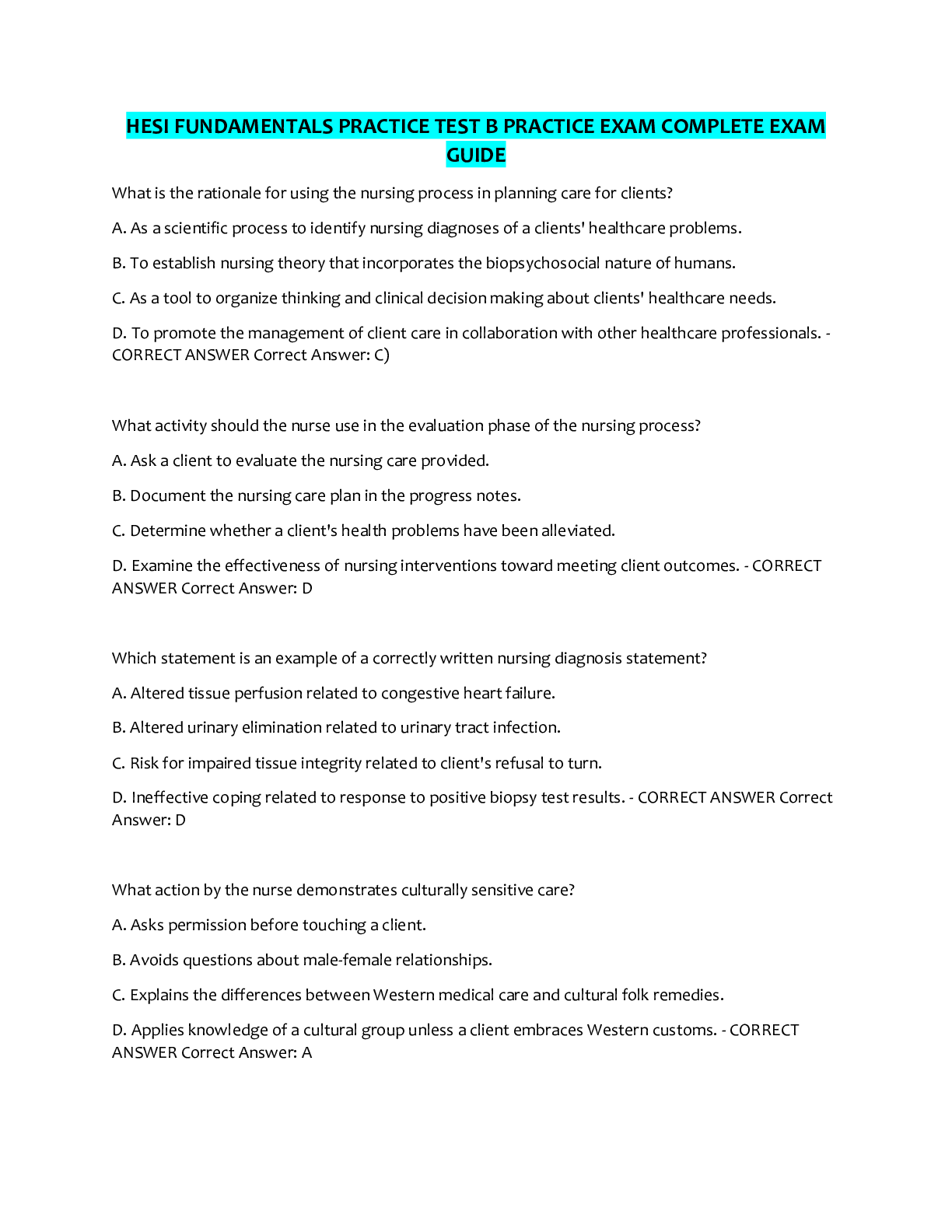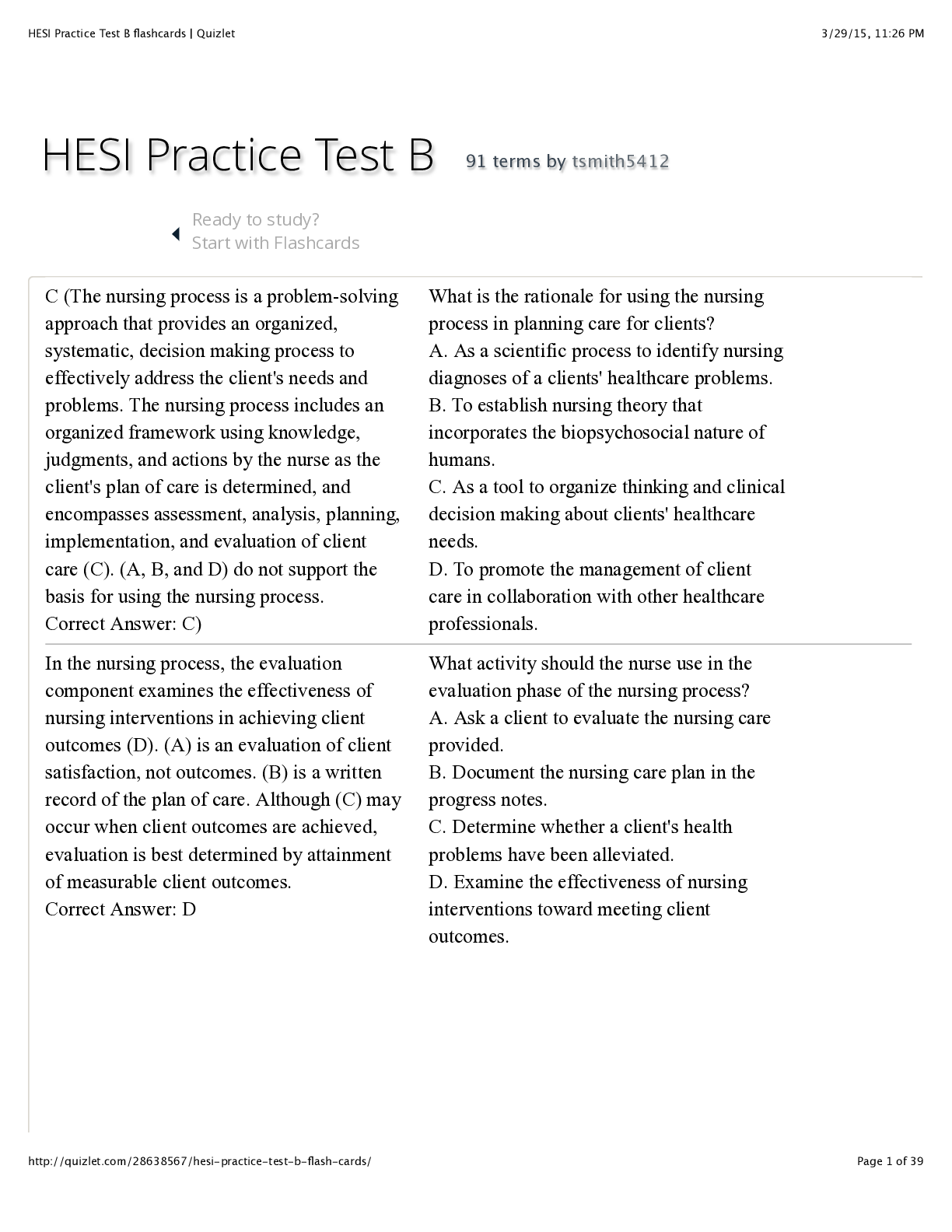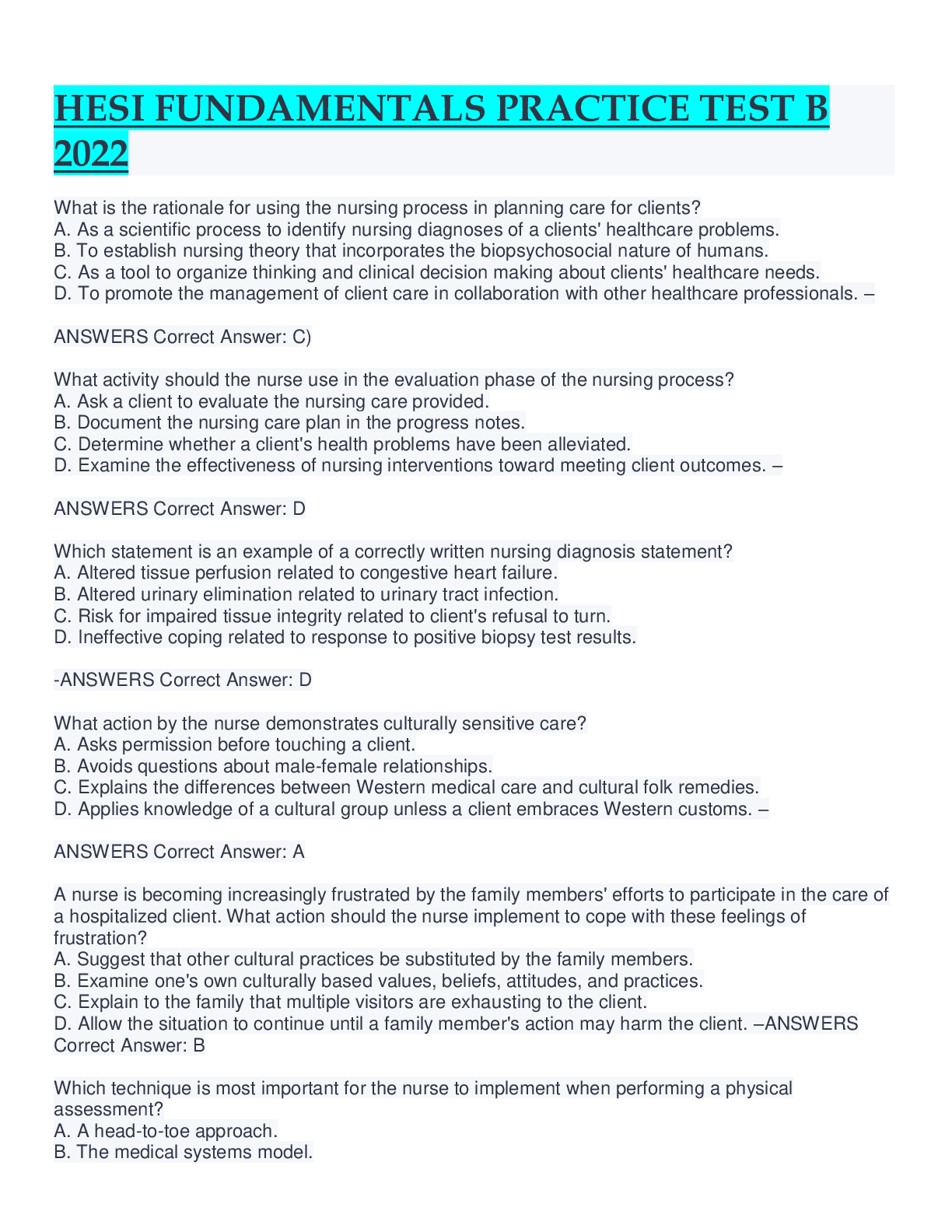HESI Fundamentals Practice Test B (Questions, Answers & Rationale)
Document Content and Description Below
HESI Fundamentals Practice Test B An older female client with rheumatoid arthritis is complaining of severe joint pain that is caused by the weight of the linen on her legs. What action should the nur... se implement first? A. Apply flannel pajamas to provide warmth. B. Administer a PRN dose of ibuprofen. C. Perform range of motion exercises in a warm tub. D. Drape the sheets over the footboard of the bed. - The nurse should first provide an immediate comfort measure to address the client's complaint about the linens and drape the linens over the footboard of the bed (D) instead of tucking them under the mattress, which can add pressure perceived by the client as the source of her pain. (A, B, and C) may be components of the client's plan of care, but the nurse should first address the client's complaint. A male client with venous incompetence stands up and his blood pressure subsequently drops. Which finding should the nurse identify as a compensatory response? A. Bradycardia. B. Increase in pulse rate. C. Peripheral vasodilation. D. Increase in cardiac output. - When postural hypotension occurs, the body attempts to restore arterial pressure by stimulating the baro-receptors to increase the heart rate (B), not decrease it (A). Peripheral vasoconstriction, not dilation (C), of the veins and arterioles occurs with venous incompetence through the baro-receptor reflex. A decrease in cardiac output, not an increase (D), occurs when orthostatic hypotension occurs. The daughter of an older woman who became depressed following the death of her husband asks, "My mother was always well-adjusted until my father died. Will she tend to be sick from now on?" Which response is best for the nurse to provide? A. She is almost sure to be less able to adapt than before. B. It's highly likely that she will recover and return to her pre-illness state. C. If you can interest her in something besides religion, it will help her stay well. D. Cultural strains contribute to each woman's tendencies for recurrences of depression. - Analysis of behavior patterns using Erikson's framework can identify age-appropriate or arrested development of normal interpersonal skills. Erikson describes the successful resolution of a developmental crisis in the later years (older than 65-years) to include the achievement of a sense of integrity and fulfillment, wisdom, and a willingness to face one's own mortality and accept the death of others (B). Depression is a component of normal grieving, and (A) does not represent susceptible adaptation to the developmental crisis of an older adult, Integrity vs despair. (C and D) are judgmental and not therapeutic. A client provides the nurse with information about the reason for seeking care. The nurse realizes that some information about past hospitalizations is missing. How should the nurse obtain this information? A. Solicit information on hospitalization from the insurance company. B. Look up previous medical records from archived hospital documents. C. Ask the client to discuss previous hospitalizations in the last 5 years. D. Elicit specific facts about past hospitalizations with direct questions. - Direct questions should be used after the client's opening narrative to fill in any details that have been left out or during the review of systems to elicit specific facts (D) about past health problems. (A and B) are time consuming, and may require the client's permission to access information about other hospitalizations. (C) may not produce the specific data needed. The nurse is preparing to give a client with dehydration IV fluids delivered at a continuous rate of 175 ml/hour. Which infusion device should the nurse use? A. Portable syringe pump. B. Cassette infusion pump. C. Volumetric controller. D. Nonvolumetric controller. - A cassette pump (B) should be used to accurately deliver large volumes of fluid over longer periods of time with extreme precise, such as ml/hour. A syringe pump (A) is accurate for low-dose continuous infusion of low-dose medication at a basal rate, but not large fluid volume replacement. Volumetric (C) and nonvolumetric (D) controllers count drops/minute to administer fluid volume and are inherently inaccurate because of variation in drop size. A low-sodium, low-protein diet is prescribed for a 45-year-old client with renal insufficiency and hypertension, who gained 3 pounds in the last month. The nurse determines that the client has been noncompliant with the diet, based on which report from the 24-hour dietary recall? (Select all that apply.) [Show More]
Last updated: 1 year ago
Preview 1 out of 30 pages
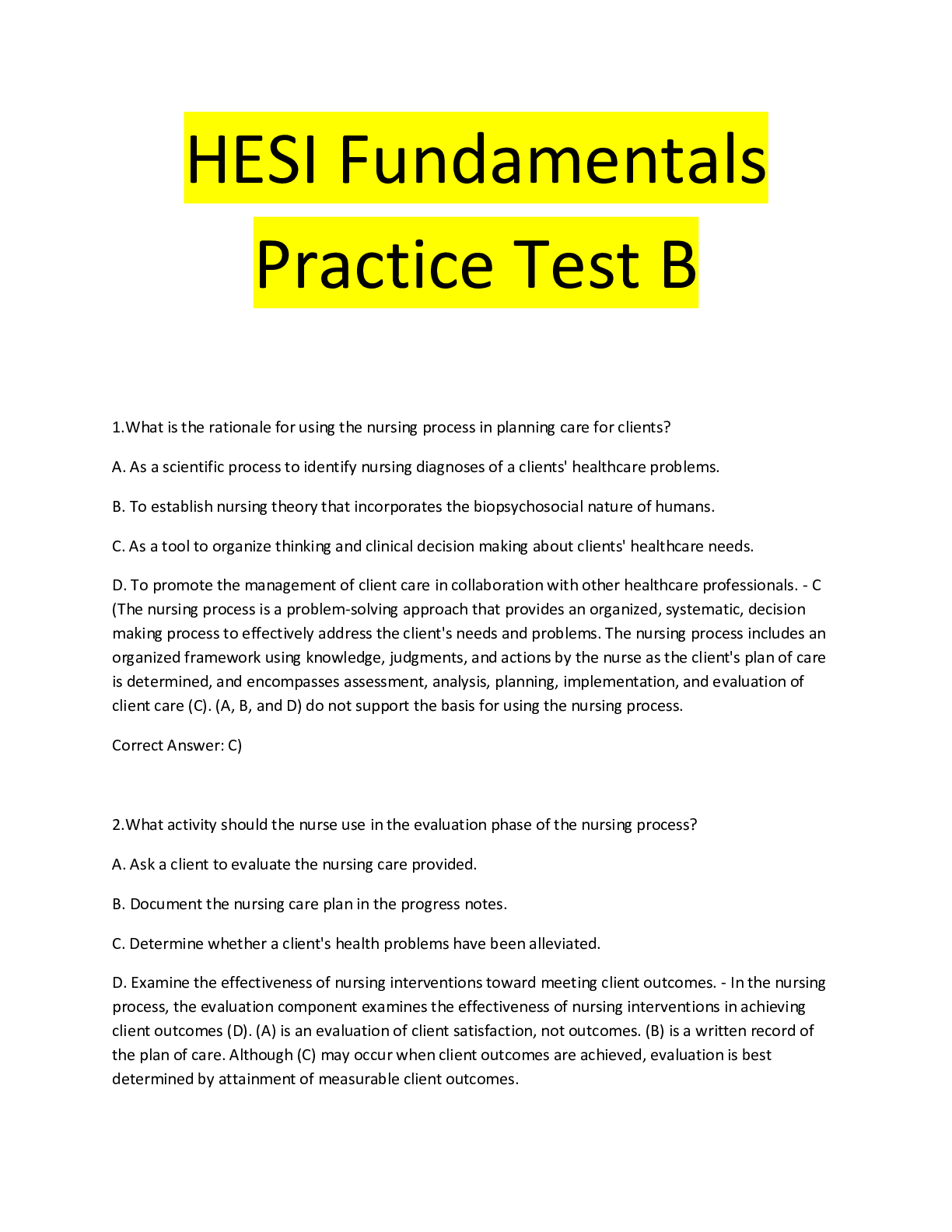
Reviews( 0 )
Document information
Connected school, study & course
About the document
Uploaded On
Feb 10, 2022
Number of pages
30
Written in
Additional information
This document has been written for:
Uploaded
Feb 10, 2022
Downloads
0
Views
132







